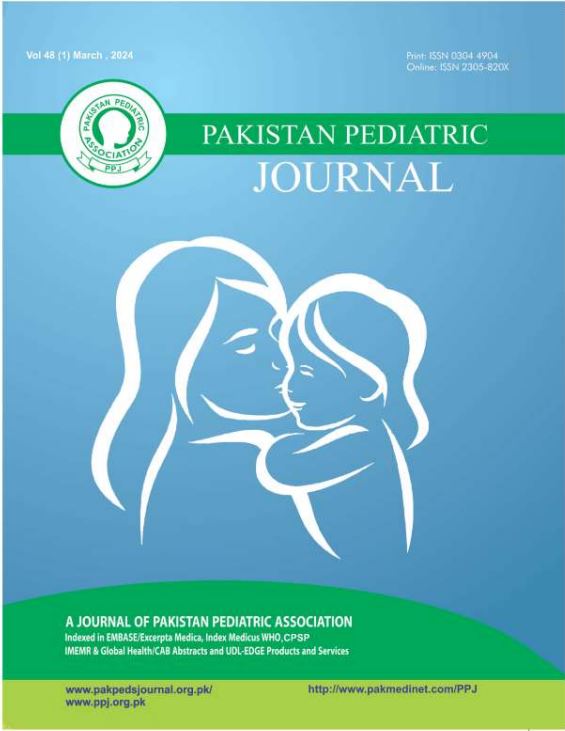Frequency and Contributing Factors of Cerebral Edema in Children with Diabetic Ketoacidosis Presenting at Children’s Hospital, Lahore
Abstract
OBJECTIVES
The objectives were to establish the frequency of cerebral edema and its contributing factors in children admitted with DKA.
STUDY DESIGN
Descriptive cross-sectional study.
PLACE & DURATION
The study was carried out at The Children's Hospital Lahore's Department of Pediatric Medicine and Intensive Care Unit from February 2016 to August 2016.
METHODOLOGY
A total of 100 admitted children 1 to 16 years of age who had DKA were included. SPSS version 20 was used to analyze the data.
RESULTS
The mean age of the patients was 9.50±3.37 years. There were 52 (52.0%) males and 48 (48.0%) females in the study groups. Duration of diabetes was a mean of 8.96±4.84 months. DKA was mild in 29 (29.0%), moderate in 47 (47.0%), and severe in 24 (24.0%) cases. Cerebral edema was observed in 24 (24.0%) children. It was significantly higher in children with a duration of disease under 6 months as compared to other groups; <6 vs. 7-12 vs. 13-18 months (52.0% vs. 13.0% vs. 17.2%; p=0.001). Among the contributing factors of cerebral edema, the fluid refractory shock was most frequent and was observed in 12 (50.0%) cases. It was followed by new-onset DM (45.8%), pH <7.15 at admission (33.3%), delayed diagnosis (29.2%), required mechanical ventilation (29.2%), bicarbonate therapy (25.0%), PCO2 <10mmhg (20.8%), younger age (<5 years, 16.7%) and BUN >20mg/dl (12.5%).
CONCLUSION:
This study will help anticipate this life-threatening complication earlier, improving the prognosis & decrease mortality and morbidity.
KEYWORDS: Diabetic Ketoacidosis, Cerebral Edema, Contributing Factors


